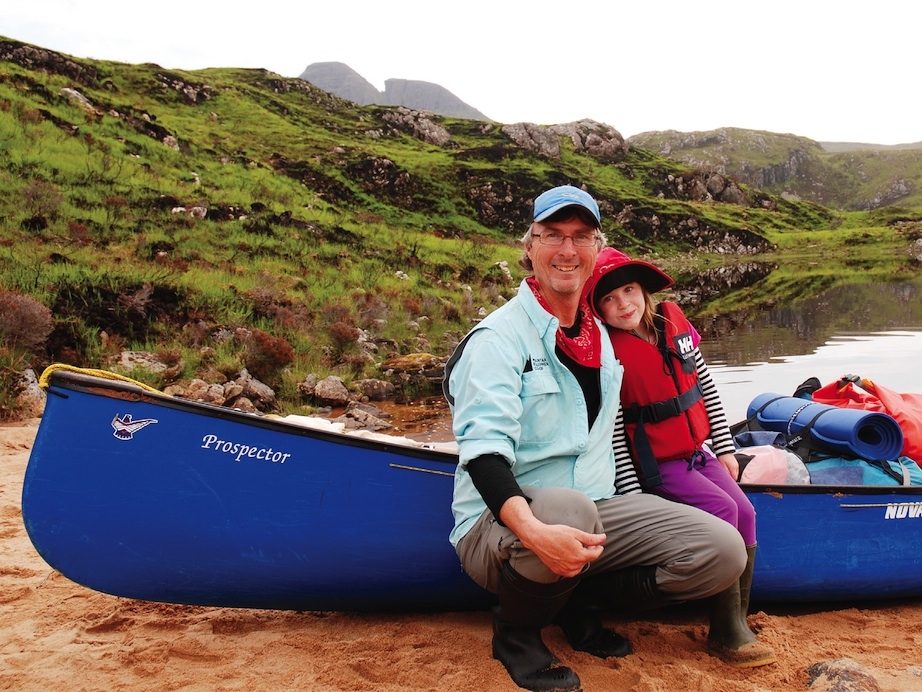This editorial originally appeared in Canoeroots and Family Camping magazine.
The butterflies began to twirl in my stomach the moment I stepped off the train in Inverness with my wife, Alana, and six-year-old daughter, Kyla. Everyone around us was wearing knee-high, green rubber gumboots. We were dressed in low, leather hikers—typical gear for a summer canoe trip in our neck of the woods. But not for the northwest tip of Scotland.
It didn’t help my confidence when our outfitter, Russell, picked us out of the crowd the moment he arrived. Looking down at our feet, he smirked and said, “You must be the Canadian paddlers.”
The uneasy feeling heightened as we dodged sheep and free-ranging cattle on the road to our put-in at Loch Buine Moire. The landscape stretched out in front of us—a shoreline of peat bogs, heather moorland, low-lying pockets of birch and, in the backdrop, the five stunted mountaintops that make up the Torridonian sandstone peaks.
Of course, we could see little of the scenery through the rain that met us at the put-in. We pulled off our leather hikers and replaced them with the gumboots supplied by Russell. Then he sketched a makeshift manual on how to erect the new tunnel tent he had packed for us, quickly described the art of lighting a Kelly Kettle with one match and a bundle of wet heather, pointed us in the right direction and sent us on our way. It was baptism-by-fire. It gave me the jitters.
After a lifetime of canoe tripping in Northern Ontario, I love the feeling of knowing how to make myself comfortable and safe out there. But into the cold rain we went, a clan of paddlers from across the Atlantic heading into the unfamiliar wilds of northern Scotland.
Once over the portage, I did what any canoeist with experience tripping during a rainstorm would do—I looked for a clump of trees to put up a tarp and light a warm fire. The problem was, clumps of trees are rare in northern Scotland and when found, they’re likely to be in the soggiest spot around. We resorted to a bog where the standing water was only ankle deep.
Two rock mounds gave us some protection against the numbing wind and amazingly enough, I was able to light the Kelly Kettle with a single match and a bundle of wet heather. I had underestimated the tunnel tent, an amazing piece of gear that was well matched to the elements surrounding us. It formed a self-supported shelter with add-on sleeping quarters. It protected us from the rain and wind and even allowed us to cook up our first meal—bangers and mash of course. We couldn’t possibly imagine cooking in our shelter on trips back home, ever wary of hungry black bears wandering the woods. Scotland’s most dangerous land mammal is the feral goat.
Once the rain stopped, we crawled out of the tunnel tent to soak in the scenery around us. We gawked as rising mist cleared from the surrounding mountains and unveiled the stunning landscape. Kyla, with her hot chocolate, and Alana and I, with a wee dram of single malt, had found comfort in our newfound, unfamiliar canoe country.
Kevin Callan may have been out of his element, but he’s no blethering skite. Despite being scunnered by midges, he fell in love with the green hills and purple heather of his mother’s land.
This article appeared in Canoeroots & Family Camping, Spring 2012.




